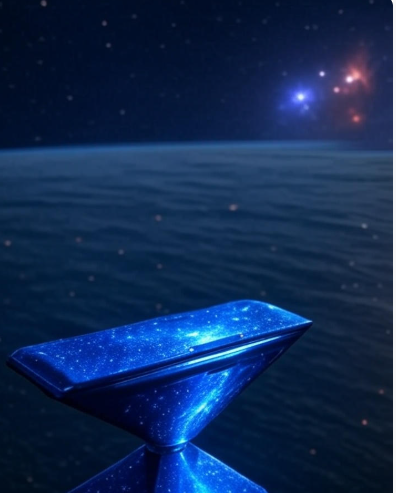Imagine waking up in a dome-shaped habitat, surrounded by rust-colored desert that stretches as far as the eye can see. You can’t step outside without a spacesuit. Your five-person crew depends on each other for survival. And every decision you make could mean the difference between life and death on an alien world.
This isn’t science fiction anymore. This is exactly what’s happening right now in the Utah desert, where volunteers are living like Martians to prepare humanity for our next giant leap.
The Real-Life Mars Experience Hidden in Utah’s Desert
Deep in the Utah desert, about seven miles from the nearest town, sits one of the most extraordinary research facilities on Earth. The Mars Desert Research Station (MDRS) isn’t just another lab or testing ground. It’s a fully operational Mars simulation where real people live, work, and breathe like they’re already on the Red Planet.
Hidden among the majestic canyons of the Utah desert, about 7 miles from the nearest town, is a small research facility meant to prepare humans for life on Mars. The Mars Society, a nonprofit organization that runs this incredible facility, recently opened their doors to show the world what life on Mars might actually look like.
What makes this place so special? It’s not just about the technology or the fancy equipment. It’s about the human element. Real people are putting their lives on hold to spend weeks at a time living exactly as they would on Mars. They’re testing not just the gear and the procedures, but their own mental and physical limits.
Why This Matters More Than You Think
With SpaceX’s Elon Musk claiming his company can get humans to Mars as early as 2029, we’re not talking about some distant future anymore. We’re talking about something that could happen within the next five years. That means the people training at MDRS right now might actually be preparing for the real thing.
“MDRS is the best analog astronaut environment,” said Urban Koi, who served as health and safety officer for Crew 315. “The terrain is extremely similar to the Mars terrain and the protocols, research, science and engineering that occurs here is very similar to what we would do if we were to travel to Mars.”
Think about that for a moment. These aren’t just dreamers playing make-believe. These are scientists, engineers, and researchers who are literally writing the playbook for human survival on another planet. Every meal they eat, every experiment they conduct, every problem they solve is helping us understand what it will really take to keep humans alive on Mars.
A Day in the Life of a Mars Colonist
So what does a typical day look like when you’re living on “Mars”? The crew at MDRS follows the same strict schedule that future Mars colonists would need to maintain. It’s not as glamorous as you might think.
“So we all gather around by 7 a.m. around a common table in the upper deck and we have breakfast,” described David Laude, who served as the crew’s commander. “Around 8:00 we have our first meeting of the day where we plan out the day. And then in the morning, we usually have an EVA of two or three people and usually another one in the afternoon.”
EVA stands for extravehicular activity. In space terms, that’s when astronauts leave their safe, pressurized environment and venture outside in spacesuits. At MDRS, crew members can’t just walk outside like they would at home. Every time they need to leave the habitat, they have to suit up completely, just like they would on Mars where the atmosphere is deadly to humans.
This might sound exciting, but imagine having to put on a full spacesuit just to step outside and check on your solar panels or collect rock samples. Now imagine doing that every single day for two weeks straight. It’s exhausting, both physically and mentally.
The Hidden Challenges Nobody Talks About
While the technology and procedures are crucial, the biggest challenge isn’t what you’d expect. It’s not the equipment failures or the technical problems. It’s something much more human.
“I think the most challenging thing about these analog missions is just getting into a rhythm,” said Michael Andrews, the engineer for Crew 315. “Although here the risk is lower, on Mars performing those daily tasks are what keeps us alive.”
This hits on something really important that most people don’t think about. When we imagine life on Mars, we picture the big dramatic moments: landing on the planet, discovering alien life, or dealing with major emergencies. But the reality is that most of life on Mars will be routine, repetitive tasks that have to be done perfectly every single day.
On Earth, if you forget to water your plants, they die and you buy new ones. On Mars, if you forget to maintain your life support systems or mess up your daily routines, you die. There’s no backup plan, no emergency services to call, and no quick trip to the store to replace what you broke.
The Real Mars Experience: More Than Just Red Rocks
The location of MDRS wasn’t chosen randomly. The MDRS station is situated on the San Rafael Swell of Southern Utah, 11.63 kilometres (7.23 mi) by road northwest of Hanksville, Utah. This particular spot was selected because the landscape is eerily similar to what we expect to find on Mars.
The MDRS campus includes a two-story habitat with a greenhouse, a solar and a robotic observatory, an engineering pod and a science building. This isn’t just a single building where people hide out. It’s a complete Mars colony setup with everything future colonists would need: living quarters, food production, power generation, scientific research capabilities, and maintenance facilities.
The psychological impact of this environment can’t be overstated. When you’re surrounded by red, barren landscape for weeks at a time, with no green plants or familiar Earth scenery, it starts to affect your mind. Crew members report that the isolation and alien-like environment create a mental state that’s probably very similar to what actual Mars colonists will experience.
Why This Matters for All of Us
You might be thinking, “This is cool, but what does it have to do with me? I’m never going to Mars.” But here’s the thing: the research happening at MDRS isn’t just about Mars. It’s about pushing the boundaries of human capability and survival in extreme environments.
The technologies being developed and tested here have applications right here on Earth. The life support systems could help people living in harsh environments like Antarctica or underwater research stations. The psychological research helps us understand how humans cope with isolation and stress, which is valuable for everything from submarine crews to remote research teams.
The food production systems being tested could revolutionize how we grow food in places where traditional agriculture is impossible. The resource management and recycling systems could help us become more sustainable on Earth.
The Human Side of Mars Exploration
What makes MDRS truly special isn’t the technology or the scientific research. It’s the human stories. These are regular people who are volunteering their time and energy to help advance human knowledge and capability. They’re not getting paid millions of dollars like real astronauts. They’re doing it because they believe in the mission.
The Mars Desert Research Station (MDRS), owned and operated by the Mars Society, is a space analog facility in Utah that supports Earth-based research in pursuit of the technology, operations, and science required for human space exploration. The facility hosts an eight-month field season for professional researchers, students, and volunteers from around the world.
These crews come from diverse backgrounds: doctors, engineers, scientists, students, and even artists. They bring different perspectives and skills to the mission, just like a real Mars colony would need. Some are testing new technologies, others are studying how humans adapt to the environment, and still others are simply learning what it takes to survive in isolation.
The Future is Closer Than You Think
With companies like SpaceX making rapid progress on Mars transportation technology, the work being done at MDRS is becoming more urgent and important every day. The lessons learned in the Utah desert will directly inform how we design Mars habitats, train Mars colonists, and plan Mars missions.
The Mars Desert Research Station near Hanksville, Utah, claims to be the largest and most robust Mars simulation facility on Earth. This isn’t just marketing speak. The facility has been operating for over two decades, refining and improving its simulation protocols based on real experience and research.
The data and insights coming out of MDRS are being used by NASA, SpaceX, and other space agencies around the world. When the first humans finally set foot on Mars, they’ll be using procedures and protocols that were developed and tested in the Utah desert.
What’s Next for Mars Simulation
The work at MDRS is constantly evolving. Each crew brings new challenges and discovers new problems that need to be solved. The facility is continuously being upgraded and improved based on what they learn from each mission.
Future missions at MDRS will likely focus on longer-duration stays, more complex scientific research, and testing of new technologies that could be used on Mars. There’s also growing interest in testing psychological and social dynamics of long-term space missions, which will be crucial for the years-long journey to Mars.
Insights
The Mars Desert Research Station represents something amazing: human ambition and ingenuity working together to solve one of the greatest challenges our species has ever faced. It’s easy to dismiss Mars colonization as science fiction, but the work being done in Utah shows that it’s becoming science fact.
Whether or not you personally ever want to go to Mars, the research happening at MDRS is helping to expand human knowledge and capability in ways that will benefit all of us. It’s a reminder that sometimes the most important work happens in the most unexpected places, and that the future of human space exploration isn’t just happening in big government labs or corporate headquarters.
It’s happening right now in the Utah desert, where ordinary people are doing extraordinary things to prepare humanity for its next great adventure. And that’s pretty incredible when you think about it.
The next time you look up at the Red Planet twinkling in the night sky, remember that there are people right here on Earth who are already living like Martians, working to make human life on Mars not just possible, but sustainable. The future of human space exploration isn’t just coming – it’s already here, hidden in the canyons of Utah, waiting for the rest of us to catch up.



